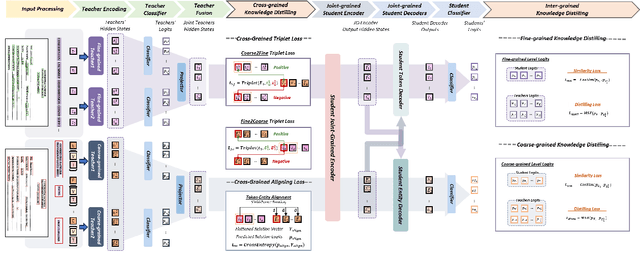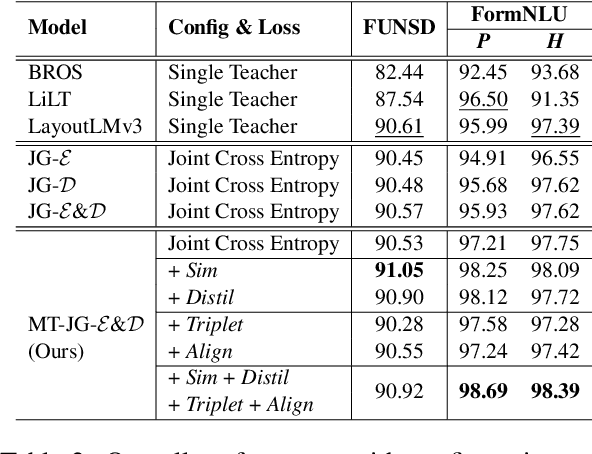Luca Cagliero
BONES: a Benchmark fOr Neural Estimation of Shapley values
Jul 23, 2024Abstract:Shapley Values are concepts established for eXplainable AI. They are used to explain black-box predictive models by quantifying the features' contributions to the model's outcomes. Since computing the exact Shapley Values is known to be computationally intractable on real-world datasets, neural estimators have emerged as alternative, more scalable approaches to get approximated Shapley Values estimates. However, experiments with neural estimators are currently hard to replicate as algorithm implementations, explainer evaluators, and results visualizations are neither standardized nor promptly usable. To bridge this gap, we present BONES, a new benchmark focused on neural estimation of Shapley Value. It provides researchers with a suite of state-of-the-art neural and traditional estimators, a set of commonly used benchmark datasets, ad hoc modules for training black-box models, as well as specific functions to easily compute the most popular evaluation metrics and visualize results. The purpose is to simplify XAI model usage, evaluation, and comparison. In this paper, we showcase BONES results and visualizations for XAI model benchmarking on both tabular and image data. The open-source library is available at the following link: https://github.com/DavideNapolitano/BONES.
Benchmarking Representations for Speech, Music, and Acoustic Events
May 02, 2024

Abstract:Limited diversity in standardized benchmarks for evaluating audio representation learning (ARL) methods may hinder systematic comparison of current methods' capabilities. We present ARCH, a comprehensive benchmark for evaluating ARL methods on diverse audio classification domains, covering acoustic events, music, and speech. ARCH comprises 12 datasets, that allow us to thoroughly assess pre-trained SSL models of different sizes. ARCH streamlines benchmarking of ARL techniques through its unified access to a wide range of domains and its ability to readily incorporate new datasets and models. To address the current lack of open-source, pre-trained models for non-speech audio, we also release new pre-trained models that demonstrate strong performance on non-speech datasets. We argue that the presented wide-ranging evaluation provides valuable insights into state-of-the-art ARL methods, and is useful to pinpoint promising research directions.
M3-VRD: Multimodal Multi-task Multi-teacher Visually-Rich Form Document Understanding
Feb 28, 2024



Abstract:This paper presents a groundbreaking multimodal, multi-task, multi-teacher joint-grained knowledge distillation model for visually-rich form document understanding. The model is designed to leverage insights from both fine-grained and coarse-grained levels by facilitating a nuanced correlation between token and entity representations, addressing the complexities inherent in form documents. Additionally, we introduce new inter-grained and cross-grained loss functions to further refine diverse multi-teacher knowledge distillation transfer process, presenting distribution gaps and a harmonised understanding of form documents. Through a comprehensive evaluation across publicly available form document understanding datasets, our proposed model consistently outperforms existing baselines, showcasing its efficacy in handling the intricate structures and content of visually complex form documents.
DQNC2S: DQN-based Cross-stream Crisis event Summarizer
Jan 12, 2024Abstract:Summarizing multiple disaster-relevant data streams simultaneously is particularly challenging as existing Retrieve&Re-ranking strategies suffer from the inherent redundancy of multi-stream data and limited scalability in a multi-query setting. This work proposes an online approach to crisis timeline generation based on weak annotation with Deep Q-Networks. It selects on-the-fly the relevant pieces of text without requiring neither human annotations nor content re-ranking. This makes the inference time independent of the number of input queries. The proposed approach also incorporates a redundancy filter into the reward function to effectively handle cross-stream content overlaps. The achieved ROUGE and BERTScore results are superior to those of best-performing models on the CrisisFACTS 2022 benchmark.
Enhancing BERT-Based Visual Question Answering through Keyword-Driven Sentence Selection
Oct 13, 2023Abstract:The Document-based Visual Question Answering competition addresses the automatic detection of parent-child relationships between elements in multi-page documents. The goal is to identify the document elements that answer a specific question posed in natural language. This paper describes the PoliTo's approach to addressing this task, in particular, our best solution explores a text-only approach, leveraging an ad hoc sampling strategy. Specifically, our approach leverages the Masked Language Modeling technique to fine-tune a BERT model, focusing on sentences containing sensitive keywords that also occur in the questions, such as references to tables or images. Thanks to the effectiveness of this approach, we are able to achieve high performance compared to baselines, demonstrating how our solution contributes positively to this task.
ITALIC: An Italian Intent Classification Dataset
Jun 14, 2023Abstract:Recent large-scale Spoken Language Understanding datasets focus predominantly on English and do not account for language-specific phenomena such as particular phonemes or words in different lects. We introduce ITALIC, the first large-scale speech dataset designed for intent classification in Italian. The dataset comprises 16,521 crowdsourced audio samples recorded by 70 speakers from various Italian regions and annotated with intent labels and additional metadata. We explore the versatility of ITALIC by evaluating current state-of-the-art speech and text models. Results on intent classification suggest that increasing scale and running language adaptation yield better speech models, monolingual text models outscore multilingual ones, and that speech recognition on ITALIC is more challenging than on existing Italian benchmarks. We release both the dataset and the annotation scheme to streamline the development of new Italian SLU models and language-specific datasets.
 Add to Chrome
Add to Chrome Add to Firefox
Add to Firefox Add to Edge
Add to Edge